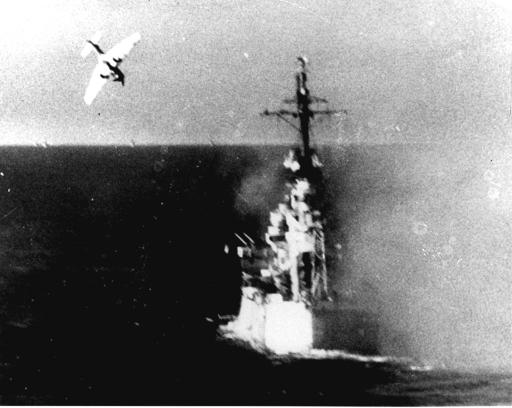The Kamikaze (神風?, common translation: "divine wind") ( [kamikaꜜze] (help·info)) Tokubetsu Kougekitai (特別攻撃隊?) Tokkō Tai (特攻隊?) Tokkō (特攻?) were suicide attacks by military aviators from the Empire of Japan against Allied naval vessels in the closing stages of the Pacific campaign of World War II, designed to destroy as many warships as possible.
Kamikaze pilots would intentionally attempt to crash their aircraft into enemy ships—planes often laden with explosives, bombs, torpedoes and full fuel tanks. The aircraft's normal functions (to deliver torpedoes or bombs or shoot down other aircraft) were put aside, and the planes were converted to what were essentially manned missiles in an attempt to reap the benefits of greatly increased accuracy and payload over that of normal bombs. The goal of crippling as many Allied ships as possible, particularly aircraft carriers, was considered critical enough to warrant the combined sacrifice of pilots and aircraft.
Prior to the formation of kamikaze units, deliberate crashes had been used as a last effort when a pilot’s plane was severely damaged and he did not want to risk being captured; this was the case in both the Japanese and Allied air forces. According to Axell & Kase, these suicides "were individual, impromptu decisions by men who were mentally prepared to die." In most cases, there is little evidence that these hits were more than accidental collisions, of the kind that sometimes happen in intense sea-air battles. One example of this occurred on December 7, 1941 during the attack on Pearl Harbor. First Lieutenant Fusata Iida’s plane had been hit and was leaking fuel, when he apparently used it to make a suicide attack on Kaneohe Naval Air Station. Before taking off, he had told his men that if his plane was badly damaged he would crash it into a "worthy enemy target".

Tidak ada komentar:
Posting Komentar